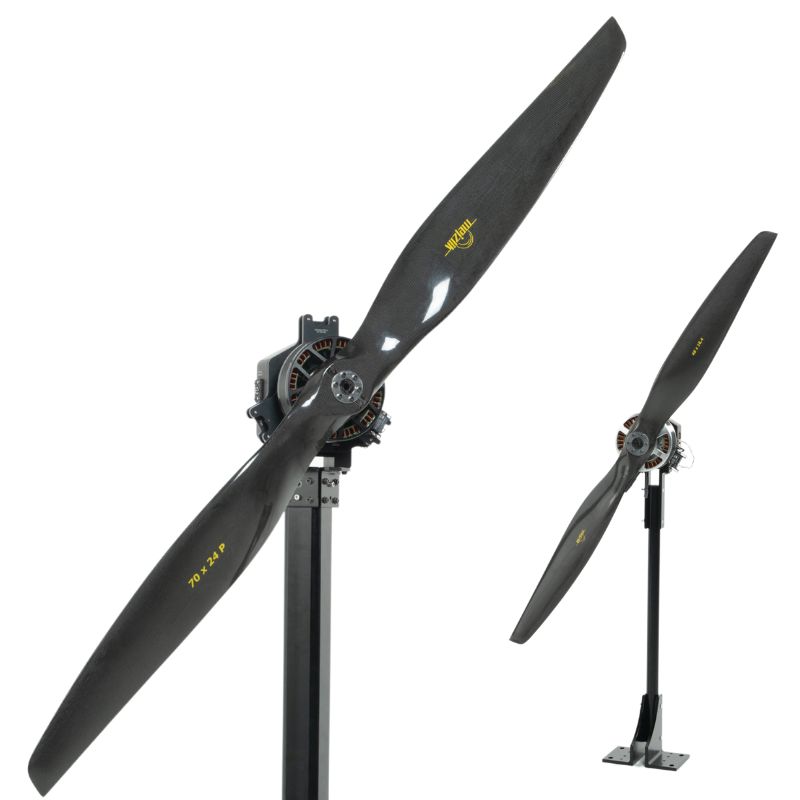We recently added some powerful new features to our Flight Stand software (compatible with the Flight Stand 15, 50, and 150), which allow users to have more flexibility in their tests.
Here’s what we’ve added:
- Input / Output API
- CAN ESC support
- Python API with examples
- Remote control of the software
- Advanced automated control templates
1. Input / Output API
The first new feature is the external input/output API. This feature allows users to connect and control third party sensors with the Flight Stand software. Examples include acoustic and vibration sensors, additional motors and flight controllers, Windshapers, and more.
When a third party input/output is connected, it will be visible in the software and will behave in one of two ways:
- For inputs, a slider will appear, which you can use to control the connected hardware.
- For outputs, a graph will appear showing the incoming data from the sensor.
One of the most powerful ways to use this tool is by connecting it to your Windshaper. This will allow you to control the wind speed of the Windshaper in the same platform where you control your propulsion tests.
Alternatively, you have the option to record data with a sensor from an external provider. For example, if you want to capture the acoustic noise generated by your propeller, you can utilize a Python-controllable sensor. By connecting this sensor to the API, you can record its data in conjunction with the readings from the other sensors on the stand.
2. CAN ESC support
An additional benefit of the I/O API is that you can now connect CAN ESCs and control them within the software. This increases the number of use cases available for the Flight Stand, especially for larger motors and propellers, as we previously supported only traditional protocols.
There is a wide variety of CAN protocols available, which is why we’ve decided to make controlling CAN ESCs possible as an external input, rather than having a dedicated DAQ to support a limited number of CAN protocols.
3. Python API with examples
Users can now fully control their tests using the Python API, and we’ve created several examples to help you get started.
This feature is useful for users who prefer to program tests in an external text editor. While the Flight Stand software’s built-in automated testing feature is quite powerful, the Python control API may save time for some users.
The documentation for loading the Python API can be found here on Gitlab.
Here’s the first tutorial that shows you how to get the Python API setup:
4. Remote control of the software
In order to enhance user safety, we have developed the ability to control the Flight Stand remotely from any computer on the same network.
This feature has two main advantages:
- Enhanced Safety: controlling the thrust stand remotely means you can distance yourself from the hazards of a spinning propeller.
- Use of Any Operating System: we currently only support Windows for the Flight Stand software, but with our remote control feature and Python API, you can control the software from any device on the network with any operating system.
This does have some safety implications since anybody in the network can activate your throttle. Make sure to only use this feature on a private network, and ensure there is good communication with your team so you have full control of the environment.
Here’s our article and video demonstrating how to do the setup:
5. Advanced automated control templates
We have developed documentation and templates to guide you through programming several advanced automated tests.
In the video below, we explain how to perform these three tests:
1. Sine Wave
2. Chirp Test
3. Sawtooth Test
This Google Sheet provides a template you can use to create your own version of these tests.
For more information on all of these features, contact our sales team.


 Back to Blog
Back to Blog


Leave a comment